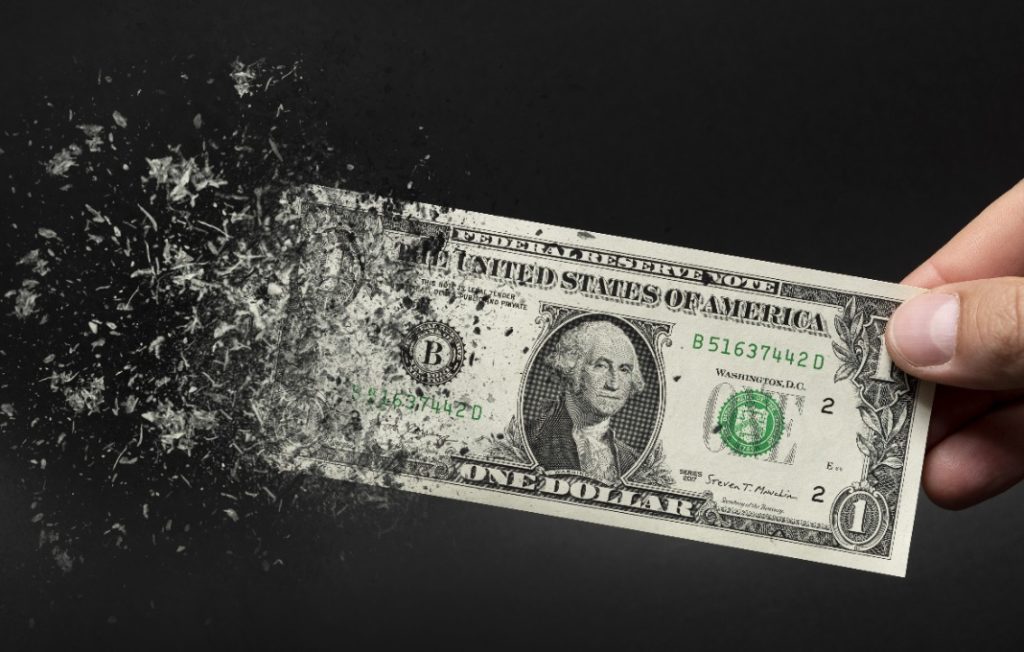
Talk of inflation is dominating the news, and with good reason. In a recent column for Bloomberg, Bill Dudley, the former president of the Federal Reserve Bank of New York, warned of the danger of significant monetary inflation, something not seen in the United States for nearly 40 years.[1]
Many of the factors that have contributed to inflation in the past are present in the economy today. They include:
- Low interest rates[2]
- Prior to 2000, the Fed generally kept its key rate at or above 5%, but since the economic effect of 9/11, that rate has only been at 5% for a brief period, leading into 2008.
- In response to the 2008 financial crisis, the rate was lowered to almost zero, beginning to climb slowly in 2016.
- The rate was lowered again at the beginning of the Covid-19 pandemic.
- High demand for products and services[3]
- The unprecedented disruption by Covid-19 to both producers and consumers has created wildly fluctuating demand for goods and services.[4]
- The pandemic has affected countries differently, with First World countries able to respond more quickly. As a result, when economies are opening in the West, producers in the East are still under lockdown.
- Transportation bottlenecks, including the blocking of the Suez Canal, have disrupted the flow of products through shipping lanes.[5]
- Aggressive government spending[6]
- The U.S. government has committed over $5.2 trillion to pandemic measures.
- This commitment is over a quarter of GDP, and U.S. pandemic spending is one of the highest fiscal commitments in the world.[7]
- A significant portion of government spending has been on unemployment benefits, which contributed to significant numbers of workers staying out of the labor market.[8]
These factors, among others, have been the cause of rising wages and prices. It would be premature to declare we are entering a period of hyperinflation. This is because many short-term problems, such as shipping and labor supply, are playing an outsized role in the current rise in prices. When these issues are resolved, we will have a better idea of what degree of inflation is likely.
We are, however, seeing rising prices and it would be wise to prepare for a period of inflation. Many experts are weighing in on the question of what a post-Covid correction is, and what is the new reality. But small to medium-sized businesses are trying to navigate volatile markets, problems with suppliers and challenges in hiring the people they need.
Businesses may need to raise prices because of the increased costs in labor and materials, but also to not miss out on a general market trend. But higher prices can mask deeper cost and management issues, and a volatile market will eventually expose these problems.
Small and mid-sized business owners make countless decisions on a daily basis with little or no time to consult with outside experts. There are three major areas business should focus on during an unpredictable post-pandemic economy:
- Cash reserves:
- When interest rates are this low, they will only go up; making money becomes scarcer and more expensive to borrow. This means the money you already have becomes more valuable to your organization.
- A long period of rising Inflation does mean that the cash you are holding will be worthless down the road, so holding large cash reserves is not ideal. However, no cash reserves give you limited flexibility when you need to respond to factors beyond your control.
- The best course of action is to plan to have enough cash on hand, but also to factor in the cost of access to money. This could include using existing lines of credit, but make sure you understand what will happen to those interest rates when overall rates eventually rise.
- Early warning systems and control of financial reporting:
- Managing cash requires sound financial processes and reporting. It takes work to ensure that reported results are consistent throughout the organization, presented in a timely way, and highlighting the right information is critical in a changing environment.
- While cash flow is good, many business owners don’t see the importance of investing in these reporting systems. However, trying to build them in a cash crisis is often more costly and deprives you of the essential information they can provide.
- Even if your financial systems are good, you still need to identify the key metrics which are your leading indicators. This creates an early warning system for possible changes in conditions which then allow you to dig further.
- Vendor and customer relationships:
- Most businesses pay close attention to their customers, but vendor relationships can create a bigger impact during periods of inflation. Since most vendors supply multiple companies, it is a good idea to talk through contingencies if supply disruption occurs.
- Payment terms are a significant aspect of vendor and customer relationships. If you have a major client who suddenly goes from 30-day pay to 60- or 90-day pay, that will dramatically affect your ability to pay your suppliers. Having contingency plans in place helps you make decisions during stressful situations.
- In addition to cash reserves, a good payment history is essential. You must identify which vendor and customer relationships are key to your organization. Then initiate policies and communication that allow increased visibility.
While small to mid-sized businesses can be overly affected by inflation, they are often in the best position to respond quickly. These businesses represent a network of relationships that often involve other community concerns. The pandemic has shown us that we can get things done quickly in an informal way that would be too complicated during regular times. It’s all about staying one step ahead of the game.
[1] finance.yahoo.com/news/inflation-way-2021-means-170015175.html
[2] https://tradingeconomics.com/united-states/interest-rate, https://www.federalreserve.gov/monetarypolicy/openmarket.htm
[3] https://www.wsj.com/articles/consumer-demand-snaps-back-factories-cant-keep-up-11614019305
[4] https://hbr.org/2020/11/predicting-consumer-demand-in-an-unpredictable-world
[5] https://www.wsj.com/articles/consumer-demand-snaps-back-factories-cant-keep-up-11614019305
[6] https://www.brookings.edu/bpea-articles/the-fiscal-policy-response-to-the-pandemic/
[7] https://www.statista.com/statistics/1107572/covid-19-value-g20-stimulus-packages-share-gdp/
[8] https://www.cnn.com/2021/05/22/politics/what-matters-labor-shortage/index.html








